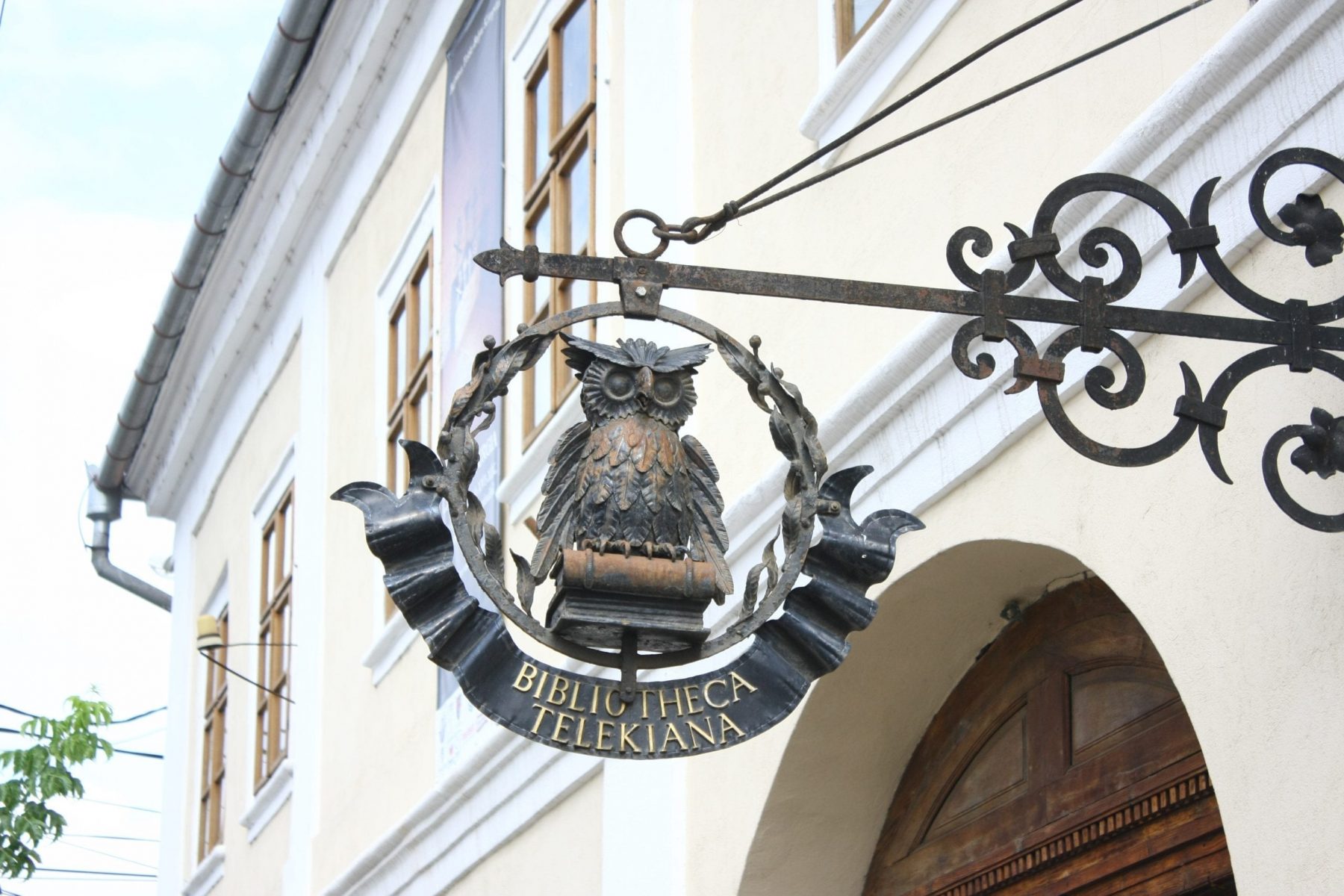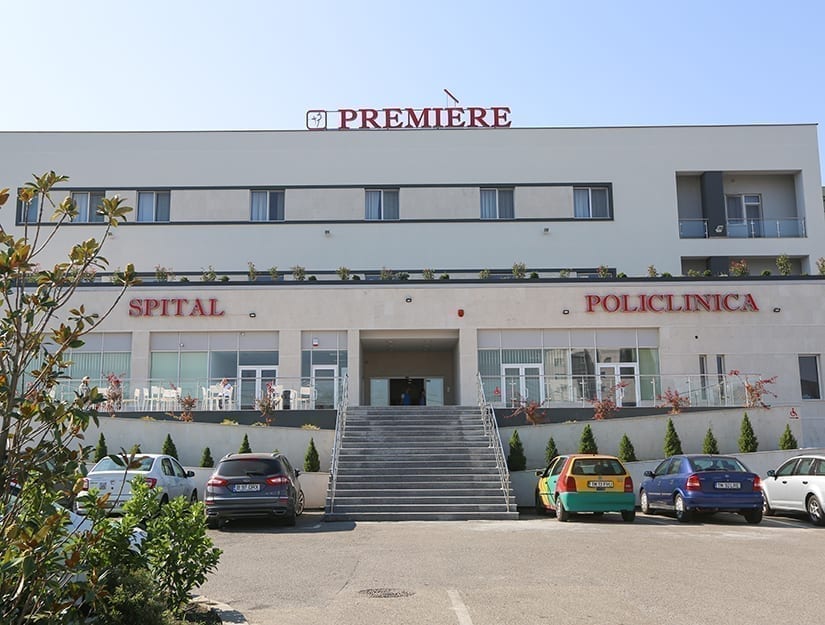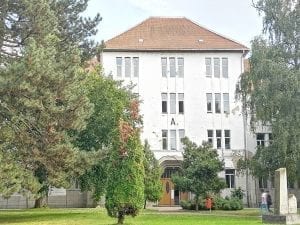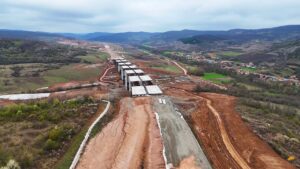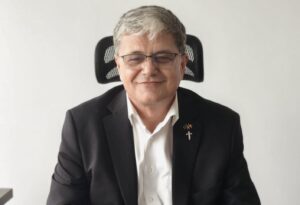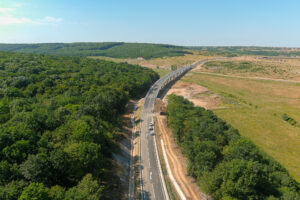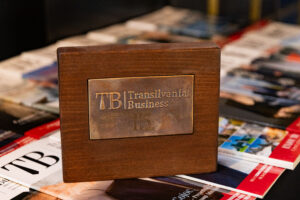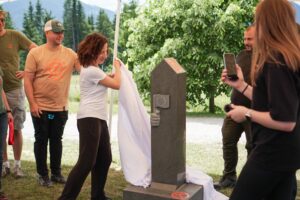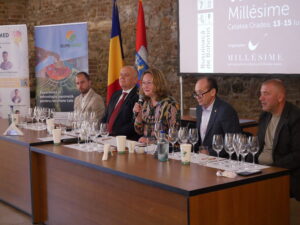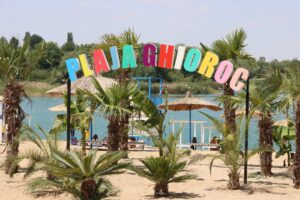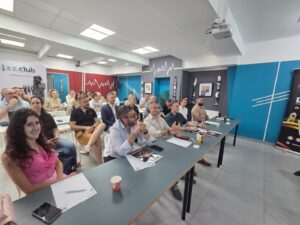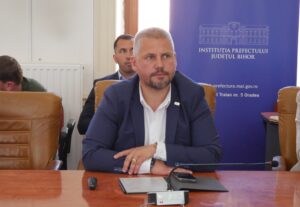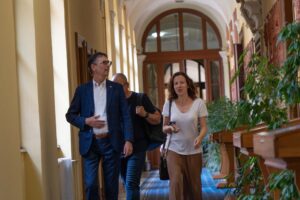The “Teleki” Library has been nationalized in 1951. In 1955, the 2nd important collection, “Bolyai” Library of the former Reformed College (Bolyai Highschool) in the city, has been transferred to this building. It is bearing the name of the two Bolyai mathematicians, who lived and worked in the city of Târgu Mureş. In 1962, the two funds have been merged under the name of the “Teleki-Bolyai” Library, which, since 1974, has become a section of the Mureş County Library. The “Teleki-Bolyai” Library is situated on the Ștefan cel Mare street, close to the “Bolyai Farkas” Theoretical Highschool.
With its fund of 250,000 volumes, all made available for the readers, the “Teleki” Library is annually visited by thousands of tourists. They are welcomed by the library employees and are led through the building’s rooms, where they can admire the permanent ancient book exhibition, a museum-hall dedicated to the two mathematicians, Bolyai Farkas and his son Bolyai János, one of the Non-Euclidean geometry founders, simultaneously, but independent of Lobacevski and Carl Friedrich Gauss.
The library also serves annually 250-300 readers, who are researching the volumes of its funds for specialized studies.
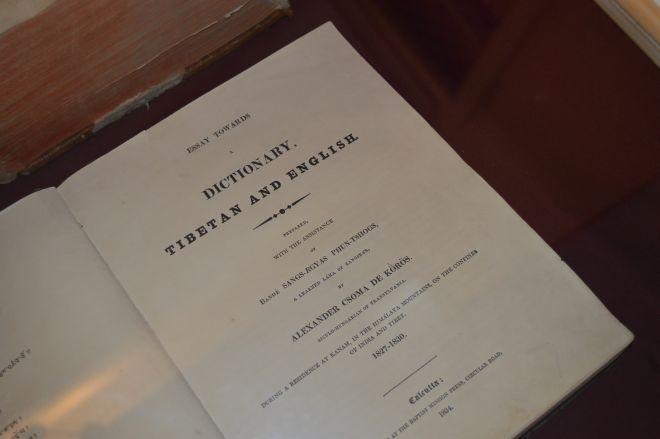
A valuable Romanian ancient book fund
In the collection of the “Teleki-Bolyai” Library, we find ancient Romanian prints, such as “The Romanian Book of Learning or the Homiliary of Varlaam” (Iaşi, 1643) and “The New Testament from Bălgrad” (Alba-Iulia, 1648). Or the “Bible of Bucharest”, the first full translation into Romanian of the Bible, edited in 1688. The edition is also known as “The Bible of Șerban Cantacuzino” and it is written in Cyrillic characters.
There are books we heard about at high school classes of Romanian language, but I wonder how many of us knew that we could see and even look them through, at Teleki Library. The Romanian ancient book collection represents a special domain, with its 231 prints belonging to the 17th-19th centuries, edited in Iaşi, Snagov, Buzău, Râmnic, Sibiu, Braşov, Alba Iulia, Buda or Vienna.
Kovács György led me through the library halls and told me about some of the exhibited books. The first volume he showed me was “The Bible of Bucharest”, the first complete translation into Romanian of the Bible, edited in 1688. The edition is also known as “The Bible of Șerban Cantacuzino” and was written in Cyrillic characters.
Hungarian ancient books, numerous unique texts
The oldest manuscript in the “Teleki” Library Fund is the Koncz Codex, from the first half of the 14th century. The codex contains the text of the Bible in Latin. “The marginal inscriptions of this copy are considered the sixth Hungarian-language monument”, according to the library’s website.
The library’s book fund contains hundreds of ancient Hungarian volumes, numerous being unique. The oldest book in Hungarian is the work of Benczédi Székely István, “Chronica ez vilagnak yeles dolgairól” (The Chronicle of the World, Krakow, 1559). “Among the unique ones, we mention the text book of logic by Transylvanian scholar Apáczai Csere János, printed in Alba-Iulia in 1654 and the volume of poems by Balassi Bálint, edited in Bardejov at middle 17th century”, we also find out on the site telekiteka .com.
The Declaration of Independence
At the “Teleki” Library you will find a copy of the United States Declaration of Independence. The Târgu Mureș copy, made by John Binns, was printed in Philadelphia by James Potter in 1819, in conformity with the original Declaration of Independence, signed on July 4, 1776 by the US founders.
The library collection also includes the volume “A Dictionary Tibetan and English”, Calcutta, 1834. Kőrösi Csoma Sándor, born in Chiuruş in 1784, the Three Seats1 county (comitatus) now a part of the city of Covasna, left on a journey to Asia, searching for the origins of the Hungarian people.
The Transylvanian Szekler explorer and philologist arrived in Tibet and India, being considered the “father of Tibetology”. He published the first grammar of Tibetan language, “A Grammar of the Tibetan Language” and one year later a Tibetan-English dictionary. Sándor Kőrösi Csoma died in Darjeeling, India, where he was buried.
by Valentin COVACIU
(From the special edition of TB 86 – „ENJOY TRANSYLVANIA!” – May/June 2019)




